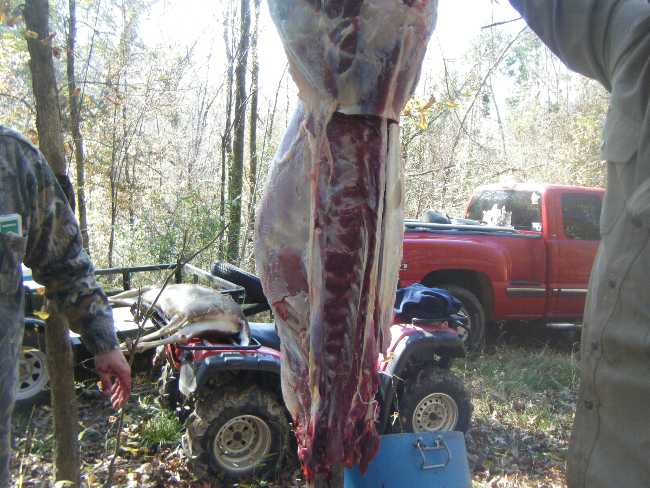How to Make Cordage out of Sinew
Sinew is another way of describing the tendons in an animal. It is a super-strong, fibrous material that connects bone to bone. You can take sinew and turn it into strong cordage that can last indefinitely as long as it is kept as dry as possible. Let’s take a look at how to harvest and process this material and turn it into something that has a million and one different uses in the field.
Deer and Elk
The best sources for sinew are from the legs of deer, elk or buffalo. The strips of material are abundant and very easy to cut and process. You can also find useful sinew along the upper back near the shoulders. Keep this in mind as you are processing your next kill, and make sure to separate these strands before discarding the carcass. You can probably also get sinew from other hunters or butchers since most of them will discard the lower leg due to their lack of meat.
Processing Sinew

Take a sharp knife and cut along the backside of each leg from just below the knee to the top of the foot. Peel back the fur and skin to expose the muscles, ligaments and tendons. Look for a whitish, thick, smooth and elastic strip that is attached to each bone. This is the sinew. Gently lift it by placing your finger between the sinew and the bone. Insert your knife and work it in as close to the anchor point as possible. Cut it away in an outward and upward motion until it detaches. Do this for both ends of the material.

Place the sinew in the sun and allow it to dry overnight. It will shrivel up a bit and the color will change to a translucent brown or amber. It will also harden into the consistency of a light plastic. You want the material to dry in order to process it properly.

The next step is to take a rock with a rounded edge or a ball peen hammer and start pounding away at the material. It will start to widen as it gets flattened, and the white color will reappear as the material separates. Long strands of fibers will start to appear, and the sinew will resemble some furry twine. You can now start to pull apart this material with your fingers. Aim to make each section about the same thickness as a thick toothpick or the wick on your average candle.
You should be able to get dozens of little strands from each piece of sinew, and these are remarkably strong. You can tie them together to make lengths of rope, use them for lashing things such arrow and spearheads or for joining pieces of wood together. You can even activate their self-adhesive properties by chewing on the ends for a few seconds. The moisture and enzymes in your saliva will release a glue-like substance that is remarkably strong when dried.
The only real concern is that the sinew will soften and stretch when moistened. Consequently, it’s important to keep items that are secured with this material as dry as possible. If they do get wet, inspect the strength of the lashing and repair as necessary. You can also reinforce loose fittings with additional strands as well.
This is a great trick to know if you run out of cordage or can’t find suitable material as a substitute. Try it for yourself, and discover how you can use it for a million and one practical purposes out in the field.

